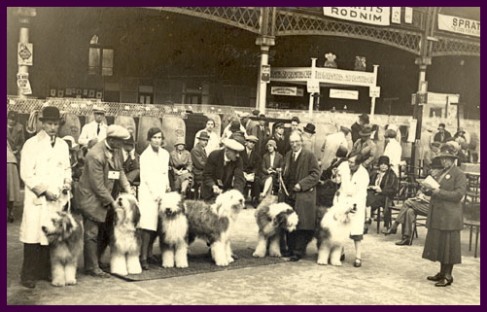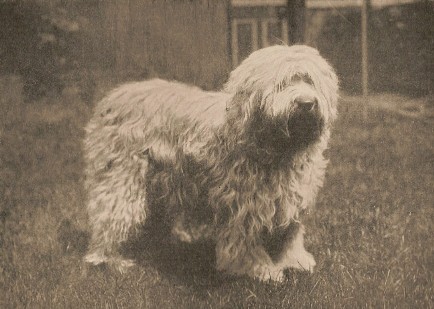M A N R O S E Old English Sheepdogs
History
Breed

Historical Background - derivation
The forefather dog originates from the wolf, but was born over 135'000 years ago, biologists have confirmed their evolution with genotype analyses.
The human being has used the dog for different functions. Depending on the necessity and usage different breeds developed. In farming herding dogs are needed, to protect property and the flock. They are also used to keep the flock (or the livestock) together and to drive the cattle to market.
Offspring were produced from those examples who were very dedicated to this work. So in time the typical characteristic was strengthened.
When farmers emigrated with their sheep and cattle, they also took their dogs with them. Through travelling an individual breed was introduced to other areas where it had not previously existed and mixing between the breeds took place. It is likely that our breed developed in this way, by crossing with other breeds and encouraging special characteristics. These qualities were stabilised with selective breeding.
Usage
The Sheepdog was versatile in his work. He drove the sheep to the market. It's also mentioned that they worked with cattle and ponies. For working dogs their owners valued their endurance, character and intelligence much more than the appearance of an animal. That's why several variations exist.
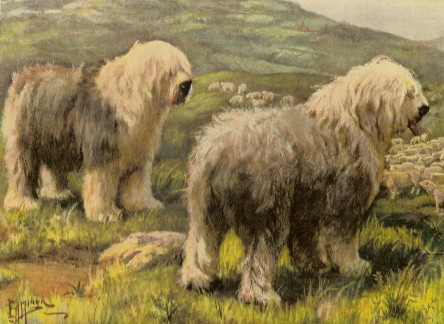
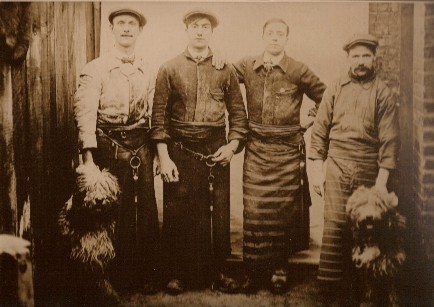
Origin - Source
Already in 1810 Parkinson wrote in his essay about livestock he describes a dog that could be recognised as an Old English Sheepdog. He writes "……with a very long coat of soft hair and distinguished by being without tails. Their colour is black or blue, with a white ring about the neck, a bald face and the belly and feet are white….. The county of Dorset lays claim to this breed of dog and they are certainly to be found more generally in that country that in any other, but they are most frequently seen at Smithfield attending the London drovers. The hair of these dog is a necessary protection again the severity of the weather as they have to lie by the fold side during many cold days while the shepherds is dressing the flock"
( Parkinson,R., Treatise on the Breeding and Management of Livestock, Cadell & Davis 1810).
Extraction out of the book of Ray Owen.
Depending on the source different origin places are named such as Dorset, Sussex, Oxfordshire, Berkshire and others. But finally all of them are in the south of England.
The first painting
A painting from 1770 shows the Duke of Buccleuch with a dog. This has affinity to an Old English Sheepdog. Especially when the painting is compared with photos of the early 1900. Also it should be noticed that the early dogs were smaller than those today. The author Aubrey Hopwood (the OES from Puppyhood to Championship,1905) believed that this would be an OES. Others like John Mandeville doubted it (The complete Old English Sheepdog, 1976).
However in this epoch it was popular in noble society to have a portrait of a dog with his owner. So maybe it was an ancestor of the later Old English Sheepdog.
Duke of Buccleuch
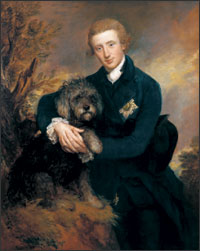
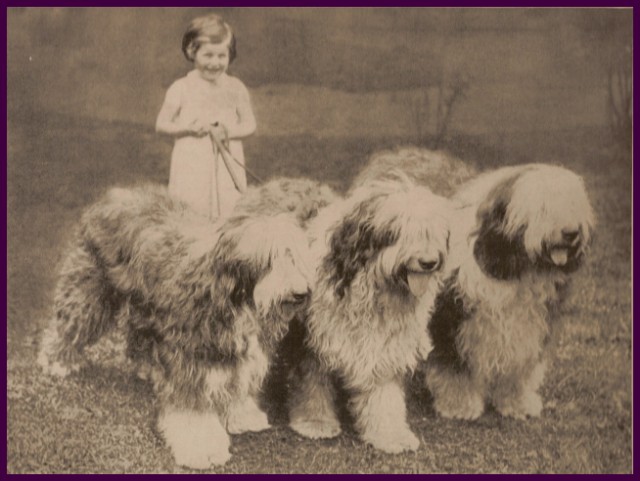
The name
From a historical point of view, different names have been used like; Sheep Dog, Bobtailed Sheepdog, English Sheepdog, Sussex Sheepdog and others. But before the turn of the century the name Old English Sheepdog won recognition. "Old English" probably occurs because the breed was well-known for a long time.
Out of the name Old English Sheepdog bob-tailed, it seems the name Bobtail developed - the most used name in the Rest of Europe today.
First Registration / First Standard
In 1877 the first registration in the English Kennel Book of two dogs were under the name "Sheepdog, short-tailed English" First Registration in the American Stud Book was 1886 as "Sheepdog, English Old fashioned Bob-tailed".
In England 1888 the Old English Sheepdog Club was founded and a first standard originated. It was already mentioned that the tails are docked. More about the history of docking is to read here.

Ch. Beat the Band, Cresswell Rags Cresswell Lassie & Sunny Jim
owned by Mrs. P. Runciman
First exhibition
At the dog show in Islingtion in 1865 there were named such dogs. In 1873 in Birmingham there was a special class for the three examples which were shown.
Fanciers assembled for the breed. Well-known even until today is Mrs. Fare Fosse with her Weather Kennel.
Crufts
1891 the very first " Cruft's Greatest Dog Show" was held, named after the founder Charles Cruft, who was in business making dog biscuit. At that time the Entry was 2000 dogs. By 1936 the entries reached 10'036.
First Book
1905 the first Book about the Old English Sheepdog was released. Author Aubrey Hopwood.
Shepton - Tilley
The Tilley Family is very well known with their Shepton Kennel. Founded in 1881 by both brothers and later continued by Henry Arthur Tilley's daughter Florence.
Many breeders have founded their Kennels (or started) with Shepton dogs. Not only in England but also worldwide. In 1904 H A Tilley founded the Old English sheepdog Club of America and travelled several times to this country with his dogs, which he also sold there. He wrote a book about the breed in 1937.
A detailed report about the Shepton Kennel, written by Mrs. Jilly Bennet - was published in the OES Magazine.
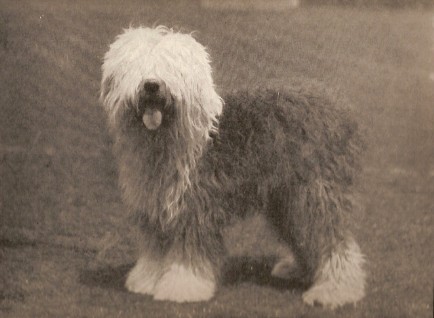
Moonshine Wheater
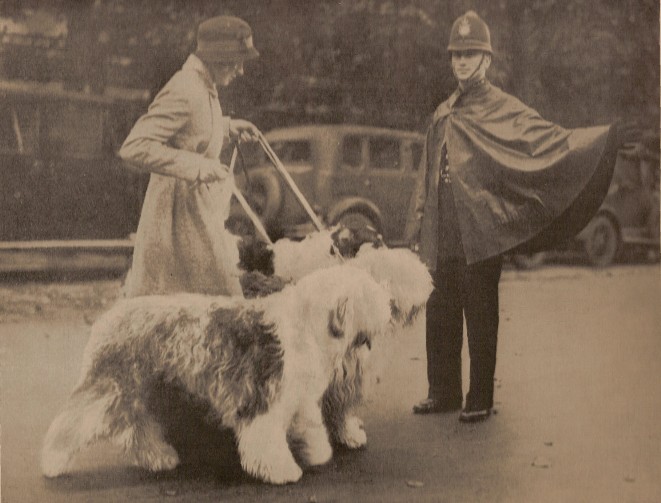
Club Show 1926
The numbers of Entries at the shows increased. For example there were already 98 OES entered at the Club Show of the OES Club of 1926 in Taunton, outside of London.
Difficulties in the development of the breed resulted from the two world wars and with this came a poor economic climate. But later the breed recovered. The Bobtail became more popular because of his excellent qualities and also he was treasured as a family dog.
In the history of the breed there are many breeders, judges and enthusiasts who should be named, because we have to be very thankful to them. Instead of listing them we would like to refer to several books.
